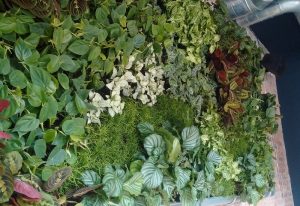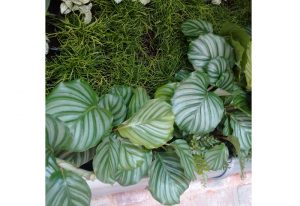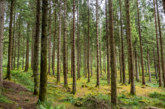
Green spaces can have a significant impact on our health and wellbeing but as cities expand, these spaces are disappearing and nature if playing less of a role in our lives. Scott Anderson looks at how the introduction of living walls by local authorities has never been so key.
Vegetation on buildings is not a new occurrence but the modern technology behind it has developed significantly over the years and now offers a host of benefits.
Whether indoors or out, a living wall can dramatically enhance its surroundings and, with design options being endless, each wall can be unique whether in a hospital, school, in a residential property, library, in an office space or public facility. As long as there is wall space available, vertical gardens can be created pretty much anywhere.
 From an aesthetic perspective, these walls can conceal visual blemishes and enhance any public space making them more attractive and easy to find. This is particularly key for our ever-increasing urban landscapes. They also help to protect exterior walls from weather damage and corrosion, providing further longevity for the space and ultimately reducing life cycle costs for an authority. However, visual aesthetics are far from the only benefit; greenery can be a therapy to ease life’s stresses and strains in these areas too.
From an aesthetic perspective, these walls can conceal visual blemishes and enhance any public space making them more attractive and easy to find. This is particularly key for our ever-increasing urban landscapes. They also help to protect exterior walls from weather damage and corrosion, providing further longevity for the space and ultimately reducing life cycle costs for an authority. However, visual aesthetics are far from the only benefit; greenery can be a therapy to ease life’s stresses and strains in these areas too.
Hospitals are a great example. The presence of a green wall can go some way to improving patients’ wellbeing. As well as the calming affects plants have on humans generally, it is thought that the influence of permanent greenery could go as far as cultivating improvement clinically such as reducing patients’ pain-relieving medication or leading to shortened hospital visits.
In the same vein, green walls can help people feel more relaxed and calm within the home or office environment; in fact, for working environments, living plants improve work rates and aids concentration. There are health benefits for these spaces too — green walls help balance humidity in stuffy interiors, which ultimately improves air quality.
Tackling pollution![IMG_20160610_144745[1]](http://labmonline.co.uk/wp-content/uploads/2016/09/IMG_20160610_1447451-300x300.jpg)
Pollution as a whole is a key consideration and this is not just restricted to outdoor pollution as the result of emissions from cars etc. Indoors, pollution can consist of an array of toxic fumes and this is particularly the case for offices with certain types of furniture containing hidden, potentially harmful chemicals.
In answer to this, green walls are made up of plants that can help absorb pollutants from the air. In fact, one wall can contain over a thousand plants that can filter air as well as creating energy-rich oxygen. This is a serious consideration not only externally for public spaces where pollution is an issue but also for local authority office spaces.
From an acoustics perspective, these systems can also go someway to helping reduce noise because the leaves of the plants reflect and absorb acoustic energy. Externally, this helps reduces the affects of city noise while internally, reverberation can be significantly reduced. From a buildings’ efficiency perspective, the walls also help to regulate temperature by keeping a building cooler in the summer, reducing the requirement for air conditioning, and warmer in the winter thanks to its insulation properties.
Businesses are becoming increasingly assessed on their commitment to sustainability and local authorities are no different. A living wall, which reduces a building’s overall carbon footprint, is a great visual demonstration of an authority’s positive contribution to the environment particularly when it’s not just humans that can thrive on the presence of green walls.
The systems provide complex eco habitats that encourage biodiversity and provide a haven for many forms of wildlife. A standard living wall comprises a carefully selected combination of plant species creating a sustainable environment for many creatures; and importantly, much needed extra habitat for urban wildlife.
Living walls
The creation of a living wall may not be as complicated as first thought. For example, at ANS Global, the living wall production starts at the company’s nursery where the modules are hand-planted by a team of horticulturists. These modules then remain at the nursery to give them time to fully establish; this is an important step to ensure the longevity of the wall.
When they are ready for installation, the modules are transported to the site on a trolley system, specially designed to protect the plants before being assembled by one of ANS’ dedicated installation teams. Maintenance is also straightforward; the modular system comes with a fully automated irrigation system and the company’s expert teams can visit regularly.
Nature plays an important role for so many reasons and it is key that local authorities look at ways to help-re-introduce greenery back into our surroundings both internally an externally. The introduction of a living wall as a great way to achieve this, particularly when the process is so straightforward.
With thanks to Scott Anderson of ANS Global for preparing this article.








